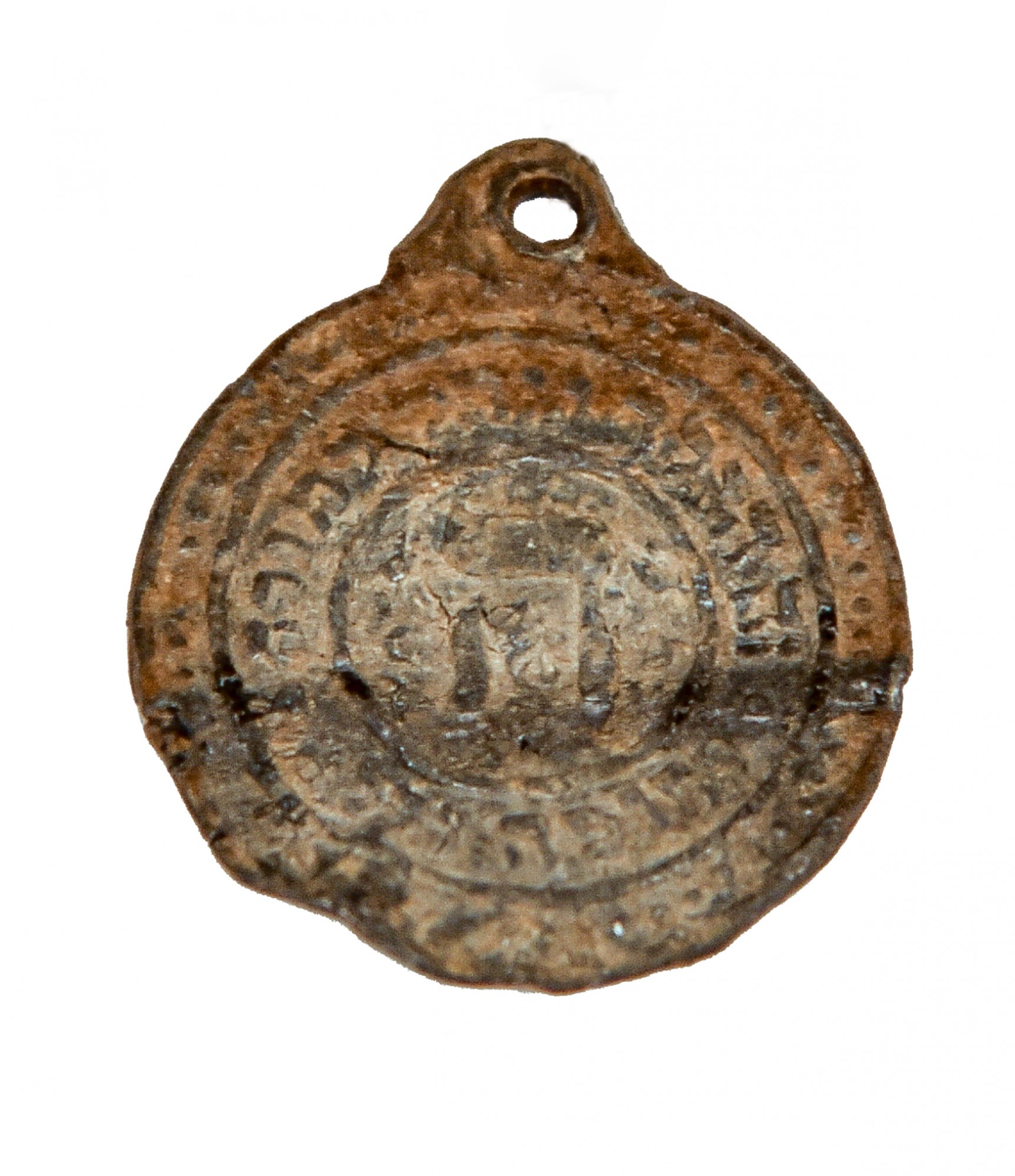EXHIBIT OF THE MONTH |
← |
Published: 2024-08-29
 Amulet to protect young children and newborns. Late 19th–early 20th century
Amulet to protect young children and newborns. Late 19th–early 20th century
Metal, casting, 3.3 cm in diameter. Acc. No. VŽM 9131
The disk-shaped amulets for children were common in the late 19th–early 20th century Poland and Lithuania. On the obverse side, the is the inscription in Hebrew: Let this child grow up for the sake of the Torah, chuppah and good deeds. In the centre there is the Hebrew letter ה (hey) – the first letter of the word Ha’Shem. Ha'Shem literally means “the Name”. God is usually referred to as Ha'Shem, except when reading the Torah (The Pentateuch of Moses) or praying. On the reverse side, there is an inscription in Hebrew: By the will of the Lord, our God and the God of our parents, may the infants of Thy people, the people of Israel, be protected from the evil eye and diphtheria (disease), and may they grow up to study the Torah, and Thou shalt defend them by Thy grace. Amen.
In Jewish culture, the use of amulets is associated with the belief in their magical power to protect against the evil eye and demons, primarily from the demon Lilitha (in Jewish mythology, Lilitah is the demon of the night, which brought diseases and death to the world). Amulets were made of metal, parchment or paper. They had quotes from the Old Testament which were cast, engraved or written on them. The quotes were supposed to protect the owner of the amulet. It was mainly pregnant women, newborns and young children who wore the amulets of the kind. It was believed that they protect against disasters and diseases during childbirth and the first days of the newborn's life. In addition, amulets meant wishing well for the child to succeed in life in fulfilling the will of God.
Prepared by Irina Nikitina, curator of museum collections
© Amulet photograph courtesy of Paulius Račiūnas
© From the collection of the Vilna Gaon Museum of Jewish History
| ↑ | ← |
